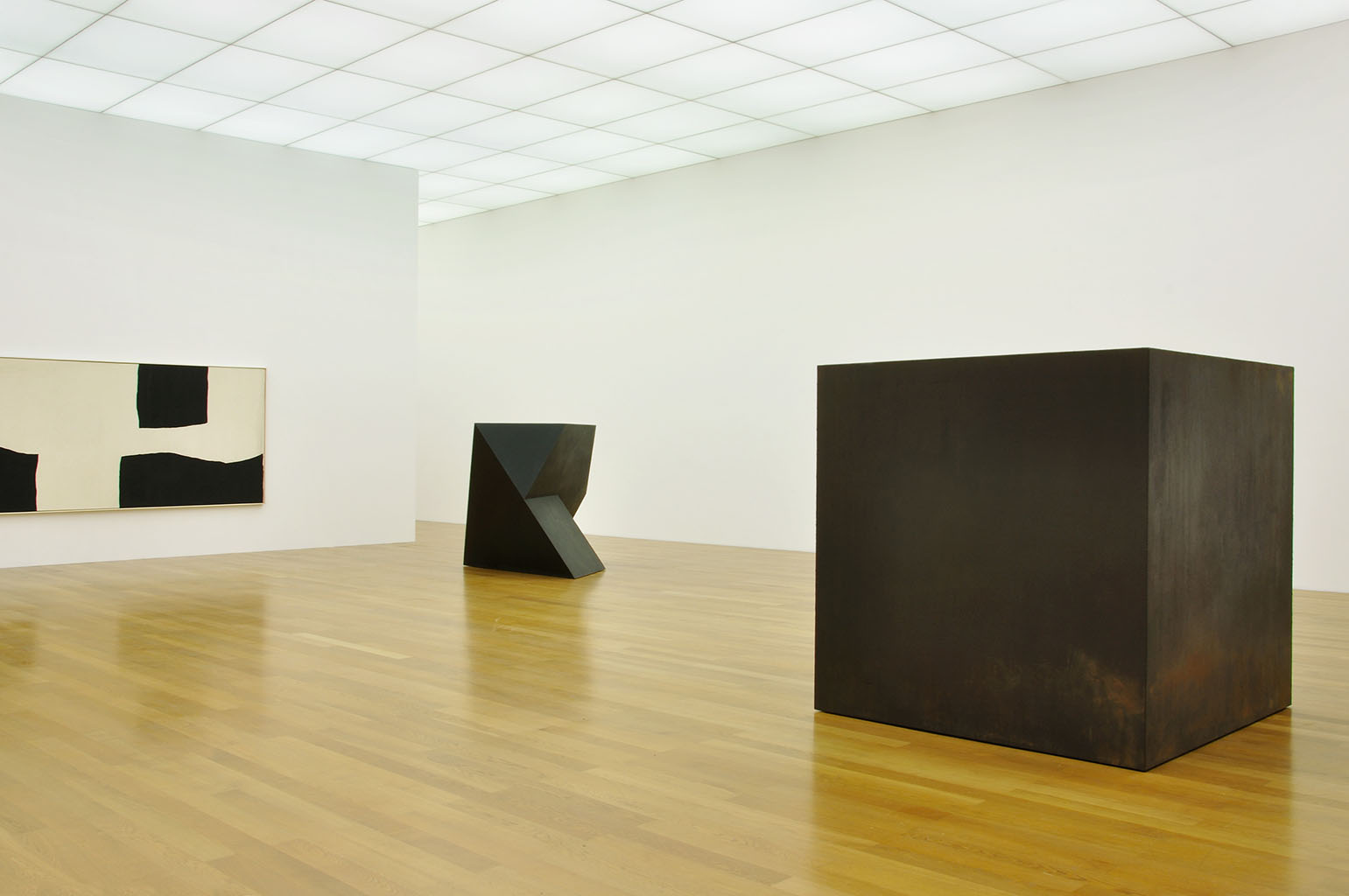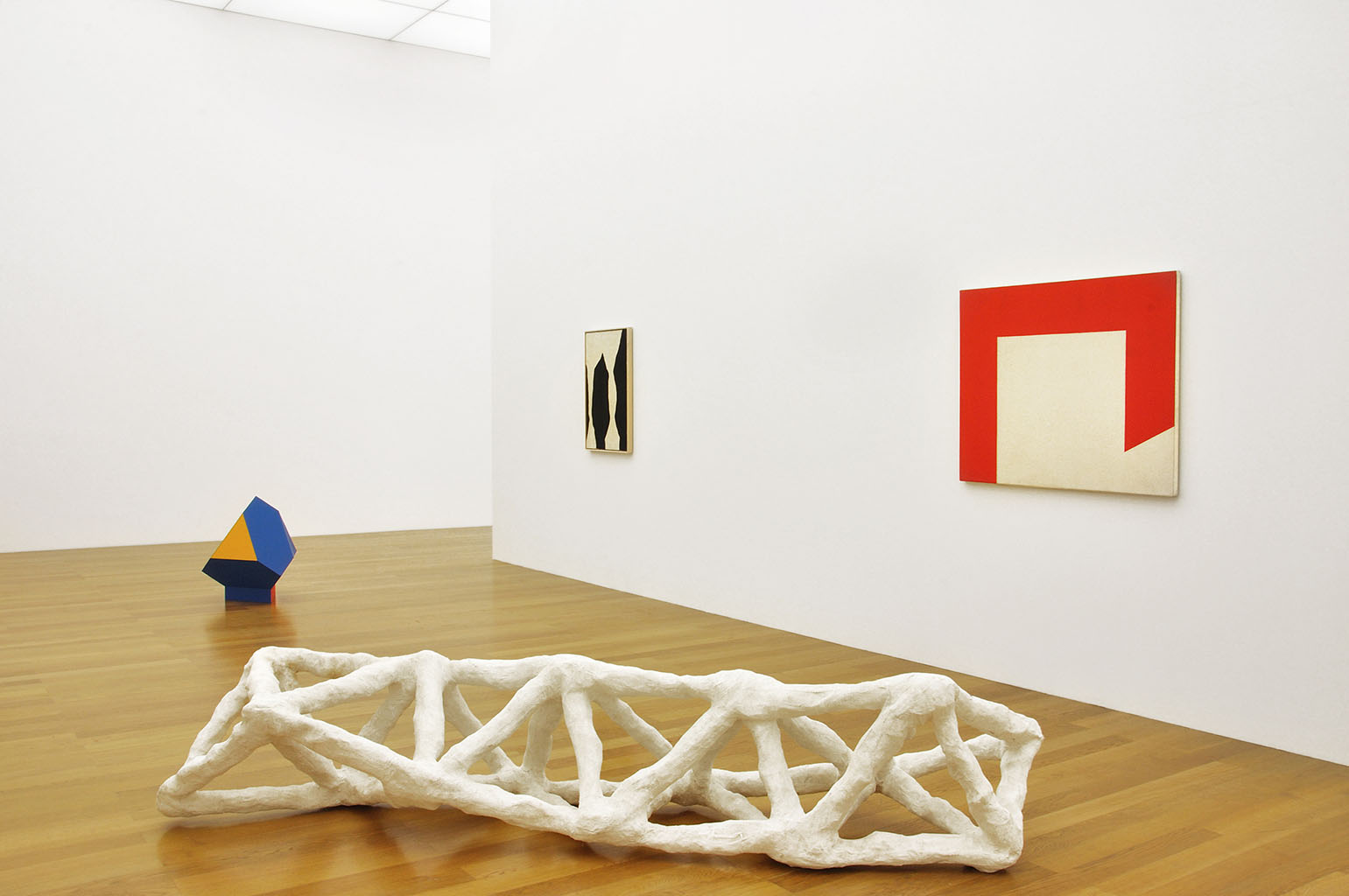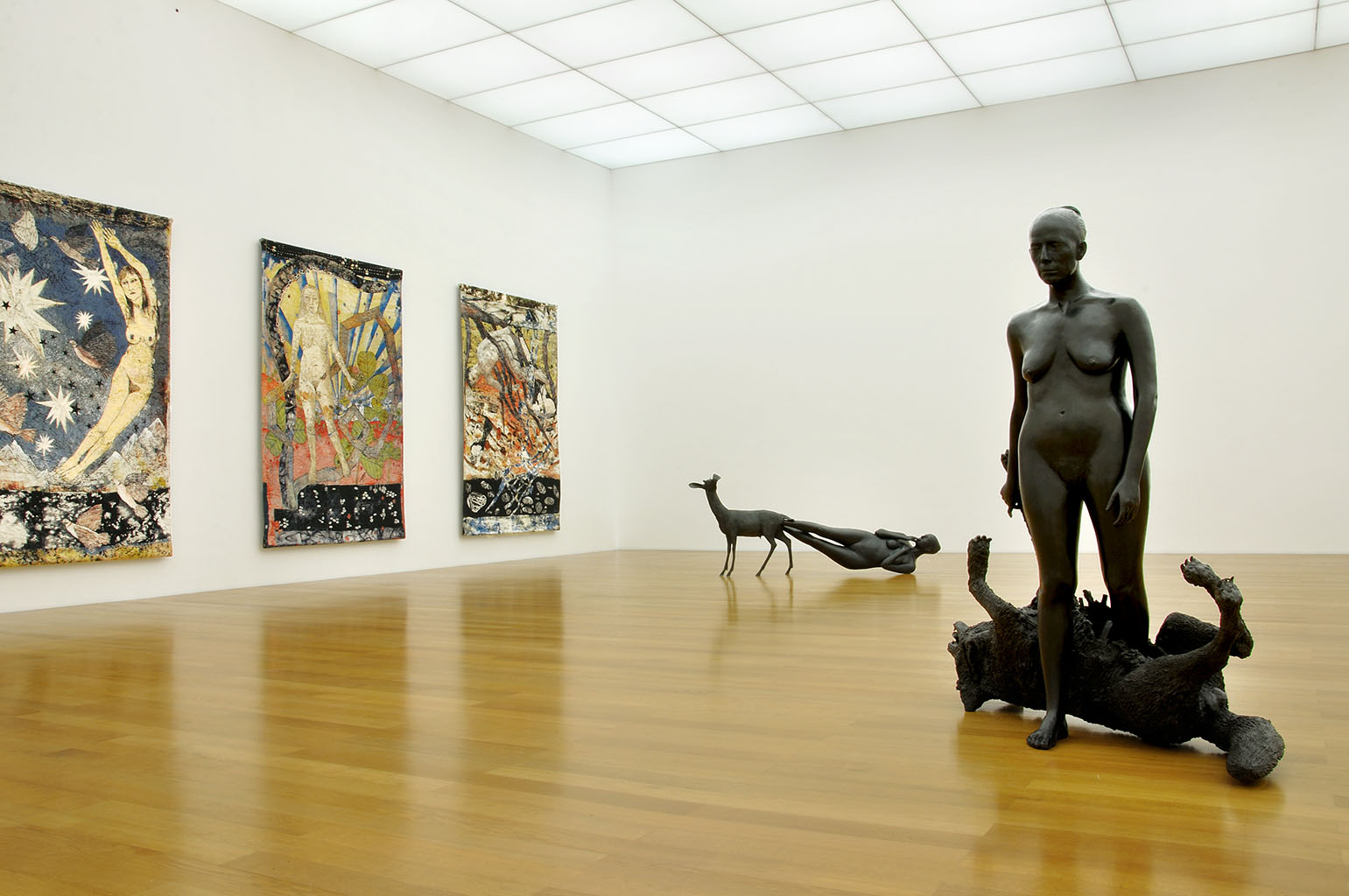Having initially worked as an architect, at the age of fifty he turned to the medium of sculpture. In 1962 he made Die, the first autonomous cube in the history of sculpture. Until his death in 1980, he produced an extensive sculptural oeuvre. Tony Smith also did numerous paintings in the non-figurative tradition. This retrospective exhibition presents not only Smith's sculptural work but also, for the first time in Europe, his paintings and his architecture, in the form of models and drawings.
Tony Smith's daughters Kiki Smith (born 1954) and Seton Smith (born 1955) are also artists whose works exhibit subtle links with those of their father.
"Our home was his studio, where we were taught about the 'integrity of scale' from his maquettes, drawings, and sculptures."
Kiki Smith's early works date from the 1980s, emerging from the feminist environment of the New York art scene. She is known today for an oeuvre (sculptures, glass paintings, tapestries, among other things) in which she gives figurative expression to fabulous interwoven complex worlds. She explores the impact of traditional symbols, images and signs by entwining cultural-historical (re)- interpretations of motifs and materials with new meanings.
Seton Smith chose the medium of photography and began to photograph architecture at an early age. Her artistic intention is to dissolve the links between architectonic form and concrete function. She is interested in examining architectural structures that influence and shape our thinking.
The exhibition is a production of Kunsthalle Bielefeld, curated by Friedrich Meschede. The show, containing more than 120 exhibits, has been installed at the Kunstmuseum Liechtenstein in close collaboration with the Tony Smith Estate and the two artists.




